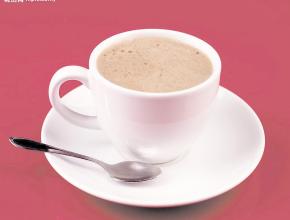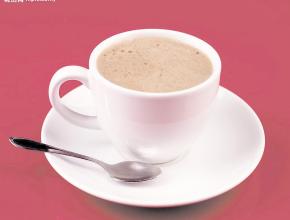Introduction of Bolivian Coffee Flavor and Taste Fine Coffee beans from Manors in Bolivia Coffee producing areas
Coffee is grown in lower and humid areas, and after harvest, coffee farmers send coffee fruits or sticky shell beans to higher elevations to La Paz for further washing and drying. But the mountain road is steep, vehicles and horses are traveling together, and it takes more than 10 hours to get to the processing plant when there is a traffic accident. Along the road, there are many tombstones killed in car accidents. The coffee industry road in La Paz and Yonghas is known as the "road of death." Bolivia is located on the southeast side of Peru and is a country of high mountains. La Paz is as high as 3660 meters above sea level, and coffee cannot be grown in such a cold place. When the Yangjas region in the northeast of La Paz borders the Amazon Basin, the sea wave is slightly lower, about 1500m to 2500m, the average annual temperature is about 10 ℃ ~ 15 ℃, and there is no frost damage in winter. The fertile soil is the characteristic of the main coffee producing areas in Bolivia. The variety of coffee from Yangjas. Give priority to the delicious Tibica.
The first extraordinary Cup was held in Bolivia in 2004. A total of 13 boutique bean cups scored more than 84. Be selected into the gold list. The top three are all from Karanawi. Champion Dou scored as high as 90.44. The European and American jury was astonished. It is called the boutique coffee of Bolivia. It is as mellow as honey jade.
The results of the 2009 Bolivia extraordinary Cup are even more eye-catching. It has a total score of more than 84 for 30 boutiques. This is more than double the number of 13 in 2004. And the top six scores are all above 90 points. Champion beans are as high as 93.36 points. The final auction was at a high price of $35.05 per pound.
It's a pity. Bolivia produces little. The annual output is between 6000 and 10000 tons. The main reason is that the hardware is relatively backward. The important reason is that the altitude is too high. But the delicious and low-yield Tibica is also to blame. In recent years, under the advice of experts. Kaddura, which has a high yield and good flavor, is also planted. Kaduai. It is hoped that midwifery can be improved.
Generally speaking, high-quality coffee beans from producing countries are more suitable for shallow roasting to medium roasting. It is rare for anyone to re-bake. So as not to empty the flavor. But Bolivian coffee beans have special powers. Shallow. Medium. It is suitable for both depths. I'm not afraid of re-baking. It is quite suitable for French baking with two exploding tails. It tastes mellow and sweet. It has a charming aroma of turpentine and mellow wine. The third wave of counter-cultural coffee in the United States is often roasted in French with Bolivian coffee. In addition, light-roasted and medium-roasted Bolivian coffee has bright sour berry aromas. Aromas of almonds and hazelnuts. It's charming.

Important Notice :
前街咖啡 FrontStreet Coffee has moved to new addredd:
FrontStreet Coffee Address: 315,Donghua East Road,GuangZhou
Tel:020 38364473
- Prev

Panamanian Coffee with Flower and Fruit Flavor introduction to the characteristics of boutique Panamanian coffee beans
The dry aroma of Rosa is very bright, with aromas of rose and jasmine, with aromas of pomelo and citrus, light baked with nutty aromas, and wet aromas with hazelnut and more floral characters. In terms of taste and flavor, compared with the previous rising aroma, the early stage may be slightly mild and subtle, a little cooler, and the flower and fruit flavor gradually decreases with the decrease of temperature.
- Next

Capsule coffee machine Italian blend coffee beans pure black ESPRESSO
Capsule coffee machines always produce the same standard aroma. However, the most charming handmade coffee is just opened the first few times, fresh aroma of coffee, grinding beans, but also the aroma diffuse, to the time of brewing coffee, wow, a room fragrance! And so drink into the mouth, ah really fragrant mellow, let a person sigh, unlimited satisfaction. Unfortunately, the shelf life of beans is very short. If we don't hurry up,
Related
- Detailed explanation of Jadeite planting Land in Panamanian Jadeite Manor introduction to the grading system of Jadeite competitive bidding, Red bid, Green bid and Rose Summer
- Story of Coffee planting in Brenka region of Costa Rica Stonehenge Manor anaerobic heavy honey treatment of flavor mouth
- What's on the barrel of Blue Mountain Coffee beans?
- Can American coffee also pull flowers? How to use hot American style to pull out a good-looking pattern?
- Can you make a cold extract with coffee beans? What is the right proportion for cold-extracted coffee formula?
- Indonesian PWN Gold Mandrine Coffee Origin Features Flavor How to Chong? Mandolin coffee is American.
- A brief introduction to the flavor characteristics of Brazilian yellow bourbon coffee beans
- What is the effect of different water quality on the flavor of cold-extracted coffee? What kind of water is best for brewing coffee?
- Why do you think of Rose Summer whenever you mention Panamanian coffee?
- Introduction to the characteristics of authentic blue mountain coffee bean producing areas? What is the CIB Coffee Authority in Jamaica?

